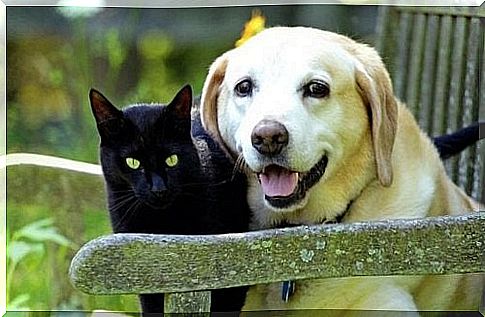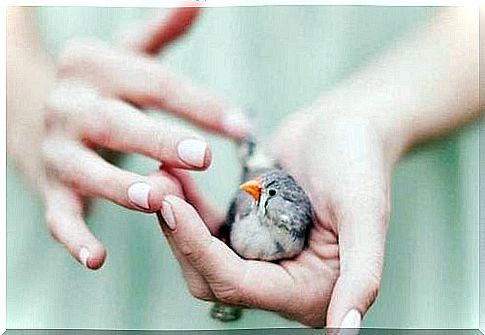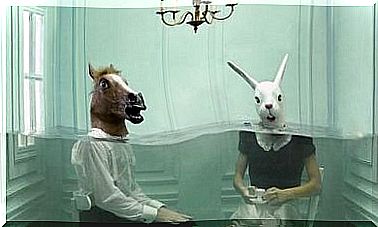Grieving A Pet: Losing A Beloved Friend

No one teaches you how to deal with grieving a pet, or how to say goodbye to someone you’ve always considered a family member. A dog is not just a dog and you cannot simply replace your cat with a new one. Each animal occupies a special place in your life and creates its own corner with memories, fine routines and meaningful looks that you will never forget.
Just a few months ago, we were surprised by an article on the same topic. Variety, an American magazine, published this article (unfortunately only in English). It revolved around Barbara Streisand trying to clone her dog. Streisand found herself unable to cope with the loss of her pet, Samantha. So she decided to have her cloned the previous year. Before the dog died, some of her cells were collected at a clinic. A few months later, Streisand had two clones of her Coton de Tulear.
Today, the singer says she’s waiting for her puppies to grow up to see if they have the same calm, intelligent disposition as Samantha. Of course everyone is free to do what he or she wants with his or her fortune. However, we wonder if this is the best way to get over the loss.
No one, animal or human, should exist just as a copy of another who is no longer here. Every human and animal is unique and incomparable. Attempting to repeat the same life story makes no sense. There are also complex medical and ethical dilemmas involved.
That said, we’d like to make it clear that grieving a pet can also be done in a healthy, helpful way. It will take courage, responsibility and strategies to accept the loss little by little.
Grieving a pet in a culture that is insensitive to pets
The loss of a pet is often paradoxical. If you lose a family member, you can get a few days off from work. If you lose a pet, you probably won’t have the same rights. However, for many people this loss is very traumatic. In fact, the trauma is often amplified by the callousness of other people. You hear people say things like, “It was just a dog,” or, “You’ll feel better if you get a new one.”
Then there’s another common pet problem that people don’t talk about very often. It’s a matter of who gets to keep the pet in the event of a divorce or other disconnection. It is such a serious problem that it often has to be solved by means of justice. In this case, whoever does not get custody will also have to mourn a pet.
An interesting development is the emergence of “consultants for bereavement for pets.” These are becoming more and more popular in the Western world. So there are actually psychologists who specialize in the bond between humans and animals and the changes such a bond can undergo. The help that these specialists offer is focused on providing space for such a grieving process. The following steps are taken in this regard:
Step 1: don’t feel guilty
Something that many pet owners experience when their pet dies is a sense of guilt. They feel they could have done more for their animals. Another element that influences the grieving process and that fits well with the experience of guilt, is euthanasia. The purpose of euthanasia is to spare an animal suffering, but it can still involve complicated emotions in the person making this decision.
So it is very important to banish every bit of guilt from your mind. Stay with your pet in his last moments and remember that there is nothing more you can do for him. Let him go with love and affection.
Step 2: respect that everyone handles loss differently
Each member of the family will deal with grieving an animal in their own way. Understanding and offering support for this is extremely important. In the same vein , it is a good idea to pay attention to how children and the elderly cope with the loss.
It may be the first time that children have had to deal with such a farewell. Then answer all their questions. Be sincere and honest, because after all, their young age says nothing about the intensity of their grief.
For the elderly, losing a pet can be even more traumatic. After all, pets play a big role in their daily lives, so the absence of a pet can be even more difficult to deal with.
Step 3: Changing Routines
Animals occupy a place in our homes, but also in our routines. They greet us enthusiastically when we arrive home after a working day and keep us company on the couch or even in bed. They provide a lively kind of companionship by begging for food or by walking us daily at a specific time. So grieving a pet means facing the absence of these little interactions every day.
Being aware of the change is already one way to make dealing with it easier. Another strategy is to develop new habits or modify existing ones to accommodate your grief.
Step 4: You can’t just replace your old pets with new ones
Let’s take another look at Barbara Streisand’s situation. It makes no sense to replace one pet with another. It is highly unrealistic to expect such a new pet to show the same character and behavior as the deceased pet.
Every animal is unique and it is important to give yourself time to grieve. You should accept the death of your pet and give your memories a special place in your heart. Later, if you still want to, you can consider a new pet. In summary, getting a new pet right away is not the best way to grieve an animal that is no longer with you.

The conclusion is that the loss of an animal can be difficult to cope with and that it evokes strong emotions. Some people feel alone and misunderstood in their grief. After all, they don’t say goodbye to just any pet. These animals were a big part of their lives. So if you need help grieving a pet, don’t hesitate to ask for help. That way you can keep all the good, fun memories and get on with your life.









